Stephen Kijak’s Doc “Rock Hudson: All That Heaven Allowed” – HBO Max tomorrow June 28
By Robert St. Martin
Eagle Rock, California (The Hollywood Times) 06/27/2023
Monday evening at the newly-opened Vidiots/Eagle Theatre in the Eagle Rock district of Los Angeles was a special screening hosted by Outfest of the new documentary Rock Hudson: All That Heaven Allowed (HBO & Max, 2023). Stephen Kijak’s archive-rich documentary finds double-meanings in deftly chosen Hudson movie clips and repositions the star’s legacy as an unwitting AIDS activist.
This tale has been told at least once before, in Mark Rappaport’s 1992 documentary Rock Hudson’s Home Movies, but with the benefit of additional archival film footage and greater remove from the events recounted, Kijak offers a different perspective. The archival collection from which he draws is rich and varied, though Hudson was so careful with his public persona that there aren’t as many behind-the-scenes visual revelations of his true self. Kijak’s documentary airs on HBO Max beginning June 28.
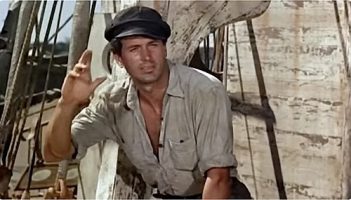
Director Stephen Kijak (Shoplifters of the World, Sid & Judy, Backstreet Boys: Show ‘Em What You’re Made Of) explores all facets of Hudson’s persona, and goes under the surface to reveal personal stories that were not previously known. Vibrantly brought to life through clips from throughout Hudson’s storied career by editor Claire Didier, Rock Hudson: All That Heaven Allowed reveals in Hudson’s coded behavior in a number of his films Rock Hudson’s hesitancy and unwillingness to marry a woman because he quietly preferred to be with men.

In his heyday, actor Rock Hudson (1925-1985) – born Roy Scherer, later changed to Roy Fitzgerald – was the seeming epitome of American masculinity, his large, muscular frame and chiseled good looks rocketing him to the pinnacle of stardom in the 1950s and 1960s. Little did the public know that he was gay, a fact carefully hidden from them through a life lived in the closet. When he died of AIDS in 1985, at the height of fear and stigma over the disease, the secret was out, much to the shock of many people.
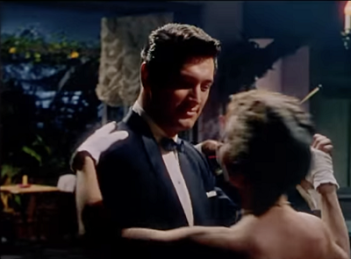
Kijak walks us through the roles that made Hudson a star. Coming fresh out of World War II, the imagery of the big All-American man began to emphasize physique and masculinity. Constant shirtlessness was becoming the new norm. For predatory agent Henry Willson, this image was one to be established in whatever way he could spread it. He would disgustingly get young actors to perform sexual acts on him for representation – once a young Illinois boy with no acting training crosses his path, Willson snatches him under his wing in much the same manner. Kijak also explains how Hudson came along at just the right moment when the post-World War II crowd was looking for a different kind of matinee idol, one whose muscularity and straightforward delivery fit the new national ideal.
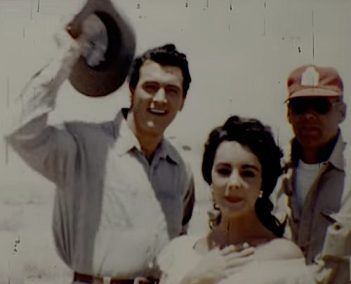
Despite his initially limited talent, Hudson the actor flourished in this environment. Rock Hudson emerged a box-office idol in the seminal movies he made for German-born director Douglas Sirk, from one of which, the 1955 All That Heaven Allows, Kijak takes his title. In that film, an upper-class widow (played by Jane Wyman, the first wife of Ronald Reagan) falls in love with a much younger, down-to-earth nurseryman, much to the disapproval of her children and criticism of her country-club peers. With more experience Rock Hudson improved his performances. In 1956, Hudson starred as a poor but hard-working friend to an alcoholic playboy married to Lauren Bacall in Written on the Wind. Then he starred in George Stevens’ Giant opposite Elizabeth Taylor and featuring James Dean, before Dean’s untimely death in a fatal car accident. Hudson was nominated for an Oscar for his role in Giant, a sprawling epic about the life of a Texas cattle rancher and his family.
With the star’s rise, there were early troubled camouflaging his sexuality. The idea that a 1952 Photoplay spread title “Bachelor’s Bedlam” – its images conveying what look unmistakably like a shared life together between Hudson and fellow actor Bob Preble in the one-bedroom house they shared off Mulholland Drive – could be taken as evidence of a homosexual relationship. But in the hilarious naivety of that time, the text depicted them as “two hunks living together to save a buck.”
The most prominent in the efforts to make the rumors go away was a sham marriage orchestrated by his agent, Henry Willson (with whom he had probably had some sexual relations, as did many of the men Willson represented), which lasted just three years. That marriage to Phyllis Gates in 1955 was designed to counter the rumors. The gossip never reached most moviegoers, however, who saw in Hudson’s powerful physique and square-jawed handsomeness exactly what they wanted to see. Phyllis Gates divorced him after three years and attempted to smear his reputation as a Hollywood “straight” man by exposing his obvious absence most of the time and making a claim about his affairs with men.
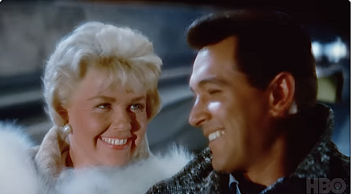
Hudson’s Hollywood output reached a peak in his popular comedies with Doris Day, beginning in 1959 with the risqué Pillow Talk and following in the early 1960s with Lover Come Back and Send Me No Flowers. With Hudson’s character blurring his sexuality for plot purposes, Pillow Talk, especially seems like an open confession of his real sexuality, with “A gay actor playing a straight man impersonating a possibly gay man.”
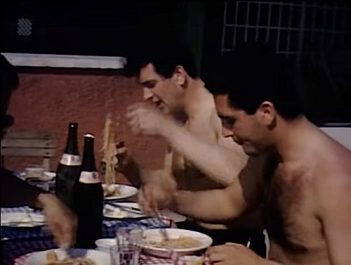
But one of the overall impressions to emerge from Kijak’s documentary, fortified by former co-stars like Piper Laurie and Doris Day, is that Hudson’s good standing in the movie community as an all-round nice guy made Hollywood protective of him. In his interviews, we only see easygoing amiability and relaxed confidence. His public persona while under contract with Universal was as manufactured as that of any studio star of the time, set up with “dates” for premiers and camouflaged by romantic items planted in the press. But compared to other queer matinee idols and sirens back then, Hudson lived as openly as he could. He was untroubled by being the star guests at clothing-optional pool parties.

His relationships with men tended to be brief, but his friendships were enduring, notably with longtime partners George Nader and Mark Miller, whom he entertained in his hacienda-style Beverly Hills home dubbed “The Castle” and visited frequently at their Laguna home near the gay beach. Interview footage coupled with these interviews confirm the type of person Hudson was professionally. But it is the personal recollections of past lovers, dear friends, and private diaries that prove most revelatory.

Some assume that Hudson reveled in being closeted, while others are more contradictory and seem to indicate Hudson would have preferred to be out. Later in 1972, Hudson hired Mark Miller as his personal assistance and Kijak’s documentary includes a number of entries for Miller’s diary entries which are especially revelatory of the last years of Hudson’s life.
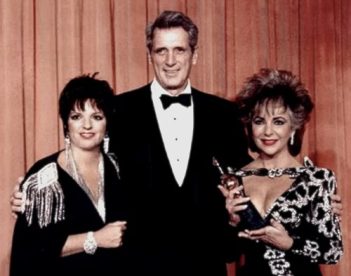
When Rock Hudson died of AIDS-related causes at age 59, the relatively open secret in Hollywood about his homosexuality turned into a startling public awareness of the impact of the AIDS crisis. Kijak, in his film, argues that being the first major celebrity to contract HIV and succumb to AIDS helped to destigmatize the disease to an extent. Of course, many of us know that it took two years before then-President Ronald Reagan would belatedly address the pandemic and being funding research. For Kijak, this made Hudson at the end of his life “an activist without knowing it.” Given that male actors in Hollywood remained worried about an association with homosexuality and AIDS, it was none other than Elizabeth Taylor who took on the role as a spokesperson for those struggling with HIV and her founding the Elizabeth Taylor AIDS Foundation. Stephen Kijak’s documentary makes a strong case for Hudson dying a hero of sorts that, in retrospect, the LGBTQ community can embrace.




